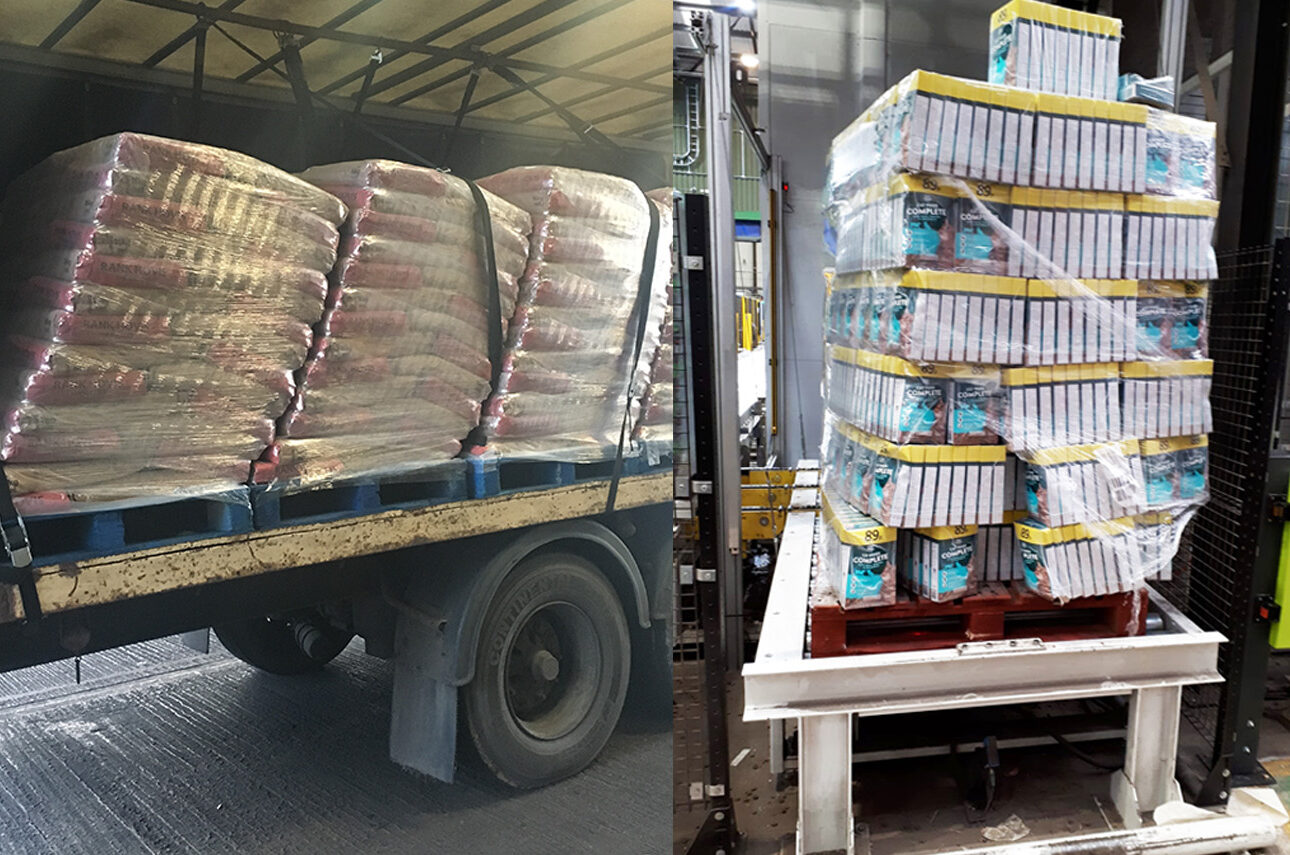
The sight of a collapsed pallet of goods in a warehouse is a reasonably common one, and it doesn’t take much to realise that the costs associated with this can be huge, with product damage, labour costs for restacking, potential fines from clients, there is a huge incentive to improve load stability and reduce pallet collapse or shift. In fact, there was an article in the news recently about one biscuit manufacturer who had a significant load fail, with most of the load ending up on a busy main road.
EUMOS, the European Safe Logistics Association states that ‘individual pallets should be stable within their own rights’. In other words, if a pallet on the back of a wagon, or a ship, or an airplane is travelling unsupported by anything else, the pallet should be capable of enduring the complete journey without collapse or slip of product. It might seem a tall order, but there are practices and processes you can put in place to drive towards and achieve this.
First, it’s important to understand a bit about pallet wrap, or stretch film as it’s more accurately referred to. In order to perform at it’s best, stretch film needs to be stretched. In fact it needs to be stretched until there is no more stretch left in it, to the point just before it snaps. At that level of stretch, the film is rigid and will provide the best load stability throughout the journey. When a film is not fully stretched (or optimised), then the film will continue to stretch during the journey, becoming baggy and loose and creating an unstable load. It therefore follows that thicker films do not provide more stable loads. This is an old belief based on the performance of traditional films, but with the emergence of nano technology films such as the Extremus 44 and 55 ranges, thinner films fully optimised will outperform thicker traditional films hands down, every time, whilst also reducing the cost to wrap a pallet, and reducing the amount of single plastic used in the process.
Second, it’s important to think about how and why a pallet collapses. One of the reasons is due to under performance of the film, and we’ve touched on that earlier in this article. The film needs to be optimised, but there’s also an art in getting the wrap pattern correct. You need to pay attention to load holding force on the pallet, and also to the number of revolutions, ensuring that there is enough overlap for the film to be able to work together as one piece, rather than as separate revolutions. But there are other reasons for pallet failure. One of the most common is insufficient locking to the pallet itself, it is incredibly important for load stability that the film is applied to at least 33% of the height of the pallet and then continuously up the pallet, to ensure that the load is held securely to the pallet. In a huge number of pallet failures, this has been the root cause. This is often an issue when pallets are wrapped by hand, as it is quite difficult to get low enough with hand pallet wrap to ensure a good overlap onto the pallet.
Third, think about the make up of the pallet. A pallet that has been block stacked will be inherently less stable than one that has been stacked with a locking pattern (see examples below). In a lot of pallet wrap situations, the pallets simply can’t be stacked securely – you can read a case study here about work we did with a duvet and pillow manufacturer to radically improve their load stability and reduce their costs at the same time. There are special techniques that can be applied to the film in situations like this – such as roping – you can see a video of this here. To give the film even greater strength properties and ensure that your pallets are solid.
Our technical sales manager Kevin says
The remarkable thing is that in many cases we can actually achieve a much more stable pallet while using significantly less material and in a shorter time-frame. That means we can deliver greater stability at a lower cost than many operations are currently achieving: it’s not unusual for our Intelligent Load Stability (ILS) system to reduce costs by up to 65%. The old saying that you can achieve more with less is certainly true when it comes to our ILS and our Extremus film. It’s all about stretch film being correctly applied to the load, not about the amount you use.
Our state-of-the-art testing equipment makes sure our solution is working as effectively as possible to achieve stability and, as a EUMOS registered firm, we’re focused on adhering to the safest of standards. And it’s not just on the roads that we are trying to make it safer – with our Extremus film we can cut the frequency of roll changeovers by 2/3 minimising the risk of back injury of operators even further.